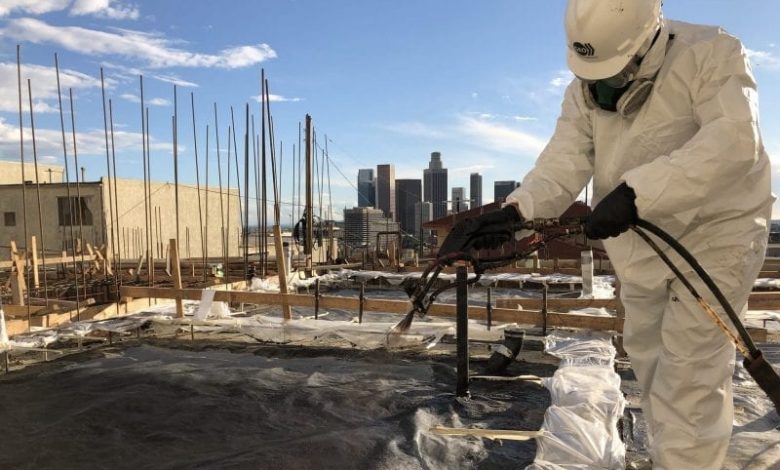Methane Mitigation Is The Most Cost-Effective Strategies That Exists To Battle Global Warming

Current methane mitigation measures available to us could limit global warming by 0.3 degrees celsius by 2045, according to a new report released by the UN-led Climate and Clean Air Coalition. The report finds that implementing widespread measures across oil & gas, agriculture, and waste is the strongest lever available for slowing climate change. Methane mitigation is also one of the most cost-effective strategies that exists to battle global warming.
Methane is the principal component of natural gas, which is often promoted by the industry as a clean fuel source. However man-made methane emissions are up to 80 times more potent than CO2 at warming the climate. The report finds significant health and agriculture benefits from limiting methane – methane is a precursor to tropospheric ozone and reducing it will decrease ozone air pollution.
Cutting methane emissions by up to 45% by 2040 could prevent 180,000 premature deaths and more than half a million asthma-related emergency hospital visits. Global crop yields could also increase by 26 million tonnes per year. Readily available solutions could cut methane emissions by 30% by 2030, the report details, primarily by
fixing methane venting and leaks in the oil & gas sector.
The report comes while new regulations are being debated which could introduce methane standards on gas imports. So far, there is no common framework or limits on methane emissions and no signs that emissions are declining. A dramatic surge in atmospheric methane has also correlated with the huge increase in US gas production. US gas is some of the dirtiest in the world, sending its exports primarily to Europe and emerging markets in Asia.
Some studies have shown methane emissions from the gas industry have been underestimated by as much as 60% in the US, with other studies suggesting 25-40% globally. There is growing pressure from regulators and investors for the industry to take action on methane emissions. On April 29, the U.S. Senate passed a bi-partisan vote to reinstate Obama-era regulations to control leaks from oil and gas wells. It requires companies to monitor, plug and capture methane from new drilling sites.
Reducing human-caused methane emissions is one of the most cost-effective strategies to rapidly reduce the rate of warming and contribute significantly to global efforts to limit temperature rise to 1.5° C.
Available targeted methane measures, together with additional measures that contribute to priority development goals, can simultaneously reduce human-caused methane emissions by as much as 45 per cent, or 180 million tonnes a year (Mt/yr) by 2030.
This will avoid nearly 0.3° C of global warming by the 2040s and complement all long- term climate change mitigation efforts. It would also, each year, prevent 255 000 premature deaths, 775 000 asthma-related hospital visits, 73 billion hours of lost labour from extreme heat, and 26 million tonnes of crop losses globally.
More than half of global methane emissions stem from human activities in three sectors: fossil fuels (35 per cent of human-caused emissions), waste (20 per cent) and agriculture (40per cent). In the fossil fuel sector, oil and gas extraction, processing and distribution account for23 per cent, and coal mining accounts for 12 per cent of emissions. In the waste sector, landfills and wastewater make up about 20 per cent of global anthropogenic emissions.
In the agricultural sector, livestock emissions from manure and enteric fermentation represent roughly 32 per cent,and rice cultivation 8 per cent of global anthropogenic emissions.
· Currently available measures could reduce emissions from these major sectors by approximately 180 Mt/yr, or as much as 45 per cent, by 2030. This is a cost-effective step required to achieve the United Nations Framework Convention on Climate Change (UNFCCC) 1.5° C target.
According to scenarios analysed by the Intergovernmental Panel on Climate Change (IPCC), global methane emissions must be reduced by between 40–45 per cent by 2030 to limit global warming to 1.5° C this century, alongside substantial simultaneous reductions of all climate forcers including carbon dioxide and short-lived climate pollutants.
· There are readily available targeted measures that can reduce 2030 methane emissions by 30 per cent, around 120 Mt/yr. Nearly half of these technologies are available to the fossil fuel sector in which it is relatively easy to reduce methane at the point of emission and along production/transmission lines. There are also available targeted solutions in the waste and agricultural sectors. Current targeted solutions alone, however, are not enough to achieve 1.5 o C consistent mitigation by 2030. To achieve that, additional measures must be deployed, which could reduce 2030 methane emissions by another 15 per cent, about 60 Mt/yr.
· Roughly 60 per cent, around 75 Mt/yr, of available targeted measures have low mitigation costs 2 , and just over 50 per cent of those have negative costs – the measures pay for themselves quickly by saving money (Figure SDM2). Low-cost abatement potentials range from 60–80 per cent of the total for oil and gas, from 55–98
per cent for coal, and approximately 30–60 per cent in the waste sector. The greatest potential for negative cost abatement is in the oil and gas sub-sector where captured methane adds to revenue instead of being released to the atmosphere.
· The mitigation potential in different sectors varies between countries and regions. The largest potential in Europe and India is in the waste sector; in China from coal production followed by livestock; in Africa from livestock followed by oil and gas; in the Asia-Pacific region, excluding China and India, it is coal and waste;
in the Middle East, North America and Russia/Former Soviet Union it is from oil and gas; and in Latin America it is from the livestock sub-sector. A majority of these major abatement potentials can be achieved at low cost, less than US$ 600 per tonne of methane, especially in the waste sector and the coal sub-sector in most regions and for the oil and gas subsector in North America.
· Mitigation potential from all measures is expected to increase between 2030 and 2050, especially in the fossil fuel and waste sectors.
· The levels of methane mitigation needed to keep warming to 1.5° C will not be achieved by broader decarbonization strategies alone. The structural changes that support a transformation to a zero-carbon society found in broader strategies will only achieve about 30 per cent of the methane reductions needed over the next 30 years. Focused strategies specifically targeting methane need to be implemented to achieve sufficient methane mitigation. At the same time, without relying on future massive-scale deployment of unproven carbon removal technologies, expansion of natural gas infrastructure and usage is incompatible with keeping warming to 1.5° Centigrade.
Dr.Seema Javed is an Environmentalist, Independent Journalist & Strategic Communicator for Climate Change




